Galaxy S8 vs iPhone 7: Samsung Puts Apple on Notice
Samsung’s latest smartphone packs in a ton of new features and enhancements, but how does the Galaxy S8 measure up to Apple’s iPhone?
In the ongoing game of leapfrog where Samsung and Apple try to outdo each other with their latest smartphones, it's now Samsung's turn to jump forward. And its new Galaxy S8 and S8+ smartphones represent a pretty big jump, extending Samsung's display dominance while challenging Apple's advantage with digital assistants and overall performance.

Apple will get a chance to answer Samsung's last smartphone salvo later this fall when it takes the wraps off the much-anticipated iPhone 8. Until then, the new Galaxy S8 and super-sized S8+ figure to make a compelling case to be your next smartphone. Here's how the new Galaxy devices measure up to the iPhone 7 and 7 Plus.
| Row 0 - Cell 0 | Galaxy S8 | Galaxy S8+ | iPhone 7 | iPhone 7 Plus |
| OS | Android Nougat | Android Nougat | iOS 10 | iOS 10 |
| Display Size (Pixels) | 5.8 inches (2960 x 1440) | 6.2 inches (2960 x 1440) | 4.7 inches (1334 x 750) | 5.5 inches (1920 x 1080) |
| Processor | Snapdragon 835 | Snapdragon 835 | A10 Fusion | A10 Fusion |
| RAM | 4GB | 4GB | 2GB | 3GB |
| Storage | 64GB | 64GB | 32GB | 32GB |
| Cameras (Rear/Front) | 12-MP/8-MP | 12-MP/8-MP | 12-MP/7-MP | Dual 12-MP/7-MP |
| Water Resistance? | Yes | Yes | Yes | Yes |
| Headphone Jack? | Yes | Yes | No | No |
| MicroSD Card Slot? | Yes | Yes | No | No |
| Colors | Midnight Black, Coral Blue, Maple Gold, Orchid Gray, Arctic Silver | Midnight Black, Coral Blue, Maple Gold, Orchid Gray, Arctic Silver | Rose Gold, Gold, Silver, Black, Jet Black, Project (Red) | Rose Gold, Gold, Silver, Black, Jet Black, Project (Red) |
| Size, Weight | 5.9 x 2.7 x 0.3 inches, 5.5 ounces | 6.3 x 2.9 x 0.3 inches, 6.1 ounces | 5.4 x 2.6 x 0.28 inches, 4.9 ounces | 6.2 x 3.1 x 0.29 inches, 6.6 ounces |
| Starting Price | $720-$750 | $840-$850 | $649 | $769 |
Design
If you fallen into a deep sleep right after Apple introduced the iPhone 6 in 2014 and didn't wake up until just a few moments ago, you wouldn't think much has changed in the look and feel of Apple's smartphones over the last two-and-a-half years. There have been a few changes: the iPhone 7 ushered in a haptic Home button, added water resistance and adopted some new colors including two different shades of black. But at a glance, Apple's current phones don't look terribly different from their last two predecessors.

Nobody's going to say that about the Galaxy S8. The phone's Infinity Display stretches from one end to the other, making bezels an endangered species on Samsung's phone. The physical home button is gone, replaced by a virtual one with haptic feedback of its own. In perhaps the only step back for the Galaxy's new design, the fingerprint sensor has moved to the back of the phone where it sits perilously close to the rear camera.
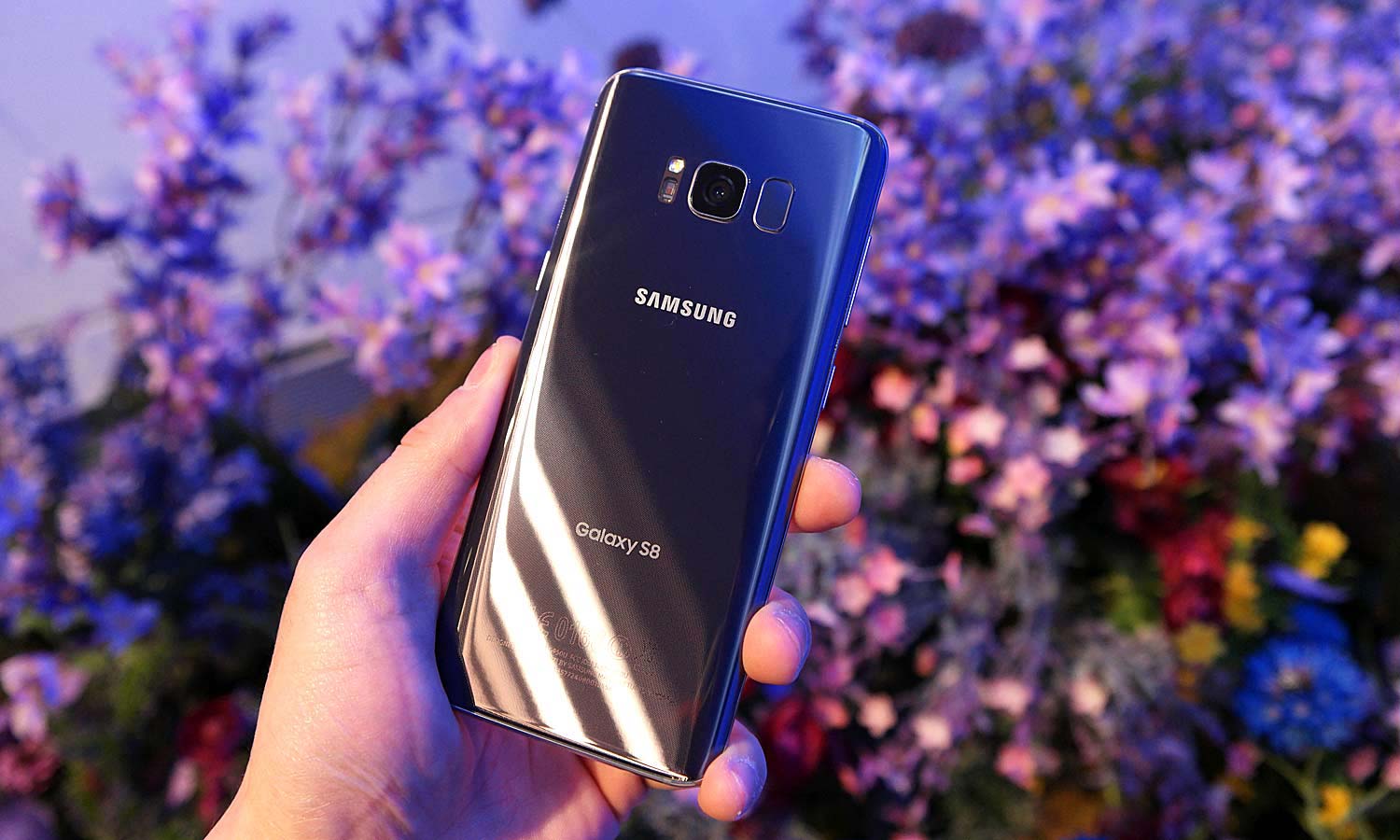
As you might imagine given the larger screen size (more on that in a moment), the 5.9 x 2.7 x 0.3-inch Galaxy S8 is a little bit taller than the 5.4 x 2.6 x 0.28-inch iPhone 7; Samsung's new phone weighs more, too at 5.5 ounces to the iPhone 7's 4.9-ounce weight. But while the S8+ is taller than the iPhone 7 Plus, it's a little bit narrower and about the same thickness while weighing less than Apple's phone (6.1 ounces to 6.6 ounces).
Advantage: Galaxy S8
Display
Samsung’s OLED screens has long enjoyed the edge over Apple and its phones. That’s because they provide richer colors and better viewing angles. That edge is only going to get larger with the Galaxy S8, as Samsung has introduced larger displays with new aspect ratios.
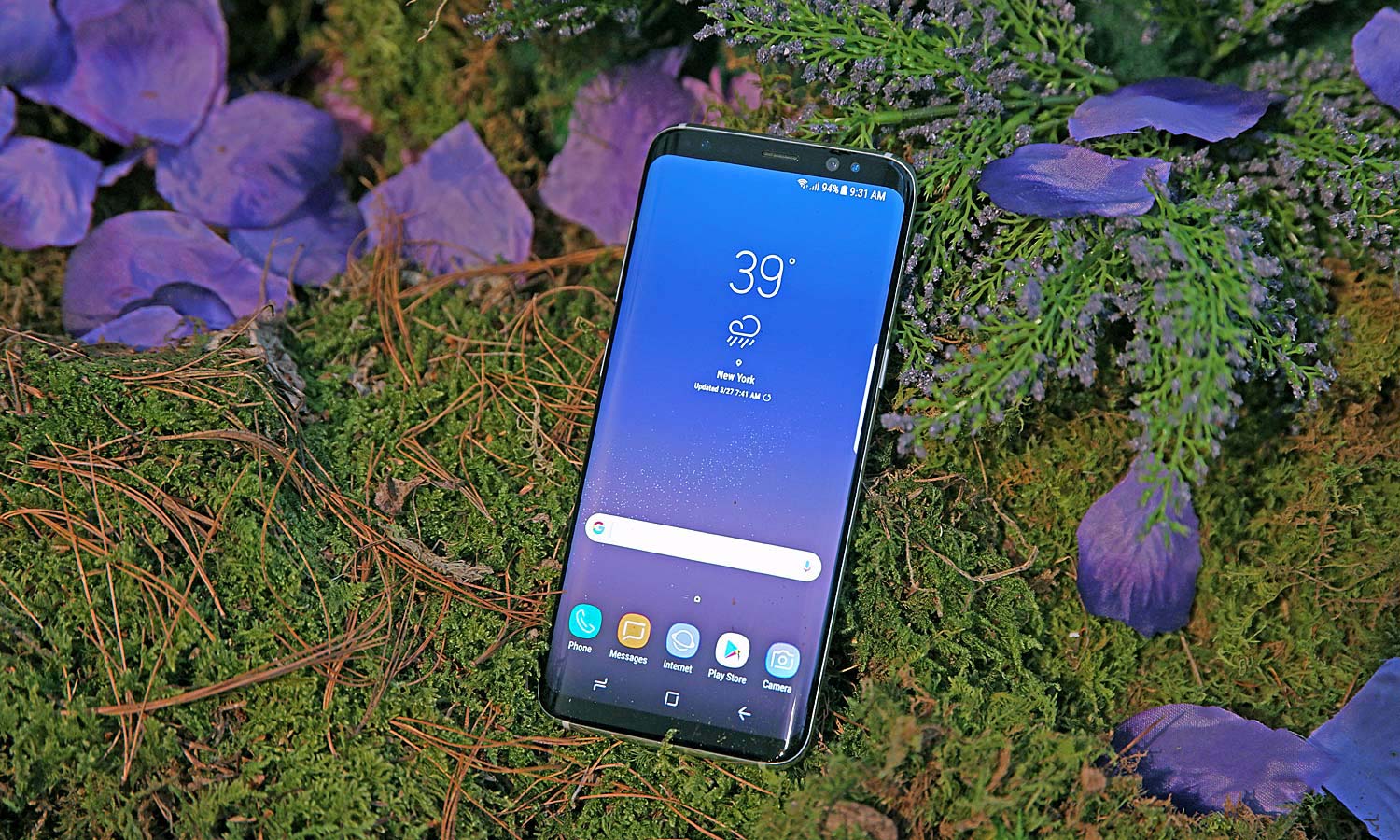
The S8 features a 5.8-inch screen while the S8+ expands things to 6.2 inches; both Samsung phones offer quad-HD+ resolution (2960 x 1440). That compares to 1334 x 750 resolution on the 4.7-inch iPhone 7 and 1920 x 1080 resolution on the 5.5-inch iPhone 7 Plus, both of which still offer LCD panels.
MORE: 9 Tips for Finding the Right Phone
The aspect ratios are also different now. While the iPhones both offer a traditional 16:9 aspect ratio, the new Galaxy models have gone with an 18.5:9 ratio. As we've seen with the LG G6, that can make for a more cinematic experience when you're watching videos. It also helps phones with larger screens still fit comfortably in one hand.
One other notable difference between the S8 and the iPhone 7 is that Samsung's phones now support HDR content, which should make for even more vivid colors when you're watching video on a Galaxy S8 — at least for the HDR videos that are currently available.
Advantage: Galaxy S8
Cameras
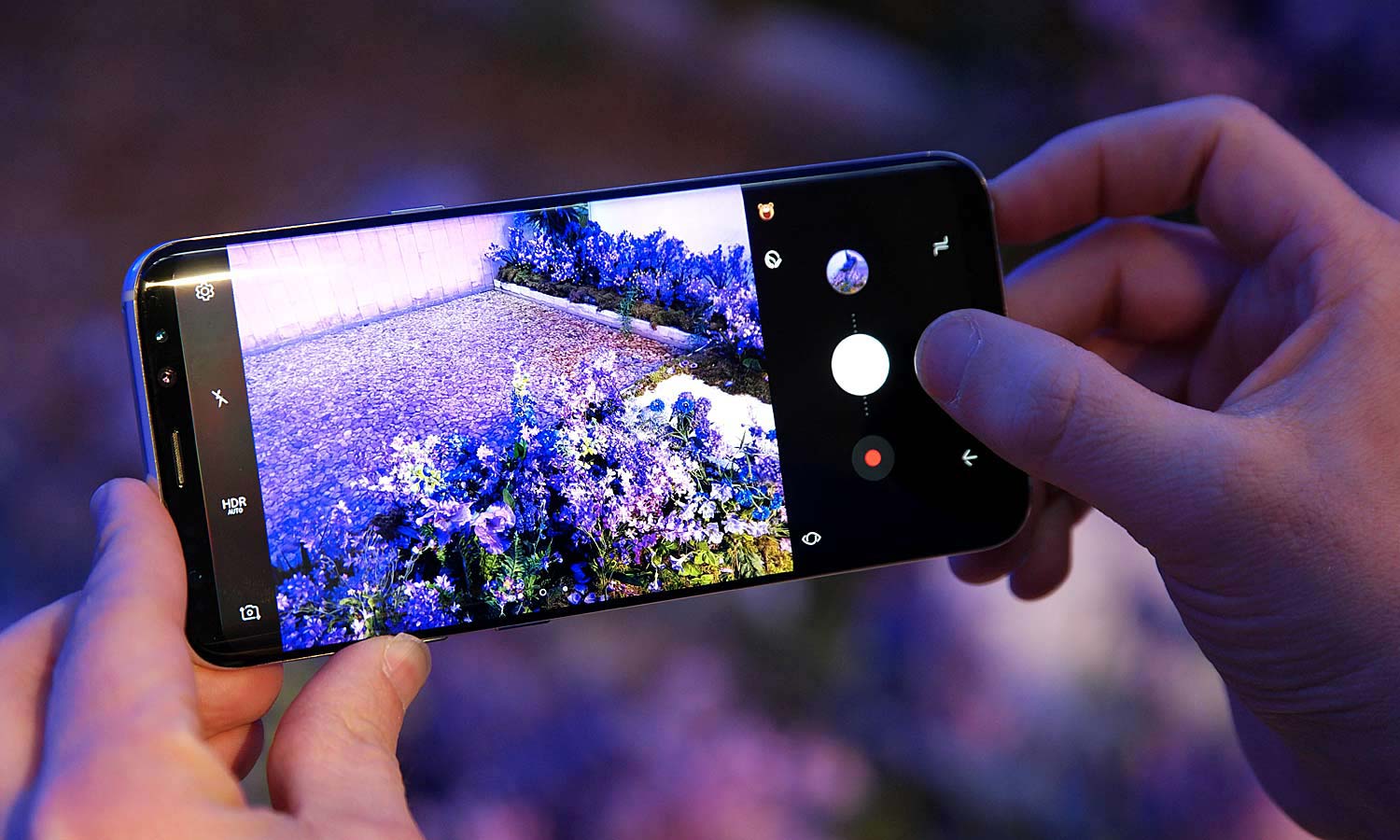
Samsung didn't do too much tinkering with the rear camera on its flagship line. The S8 supports the same dual-pixel technology introduced with the Galaxy S7, which helped that phone take on all comers in many a camera phone face-off over the last year. Samsung promises some software improvements that will improve image quality.
MORE: Best Galaxy S6 and S7 Trade-In Deals
However, you won't find anything as radical as the dual cameras that Apple added to the rear of the iPhone 7 Plus last fall. That means if you want a true optical zoom, you're still going to have to turn to Apple's phone (or the newly introduced LG G6, which also added that feature).
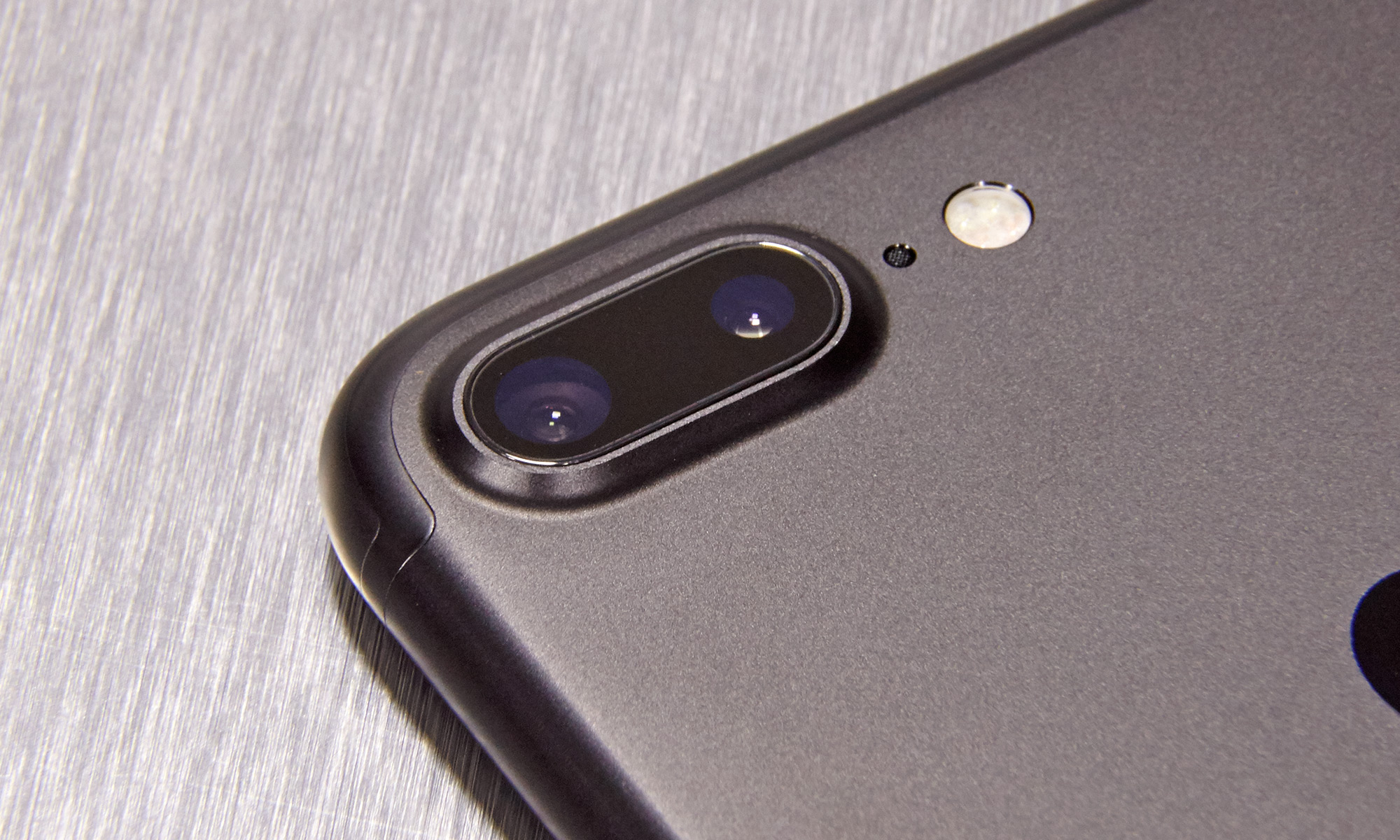
Things are different up front, where both the S8 and S8+ now feature 8-megapixel selfie cams, an upgrade from the 5-MP shooters found on last year's S7 models. That's also ahead of the 7-MP front cams on both Apple's iPhones, though more than megapixels are at stake here: Samsung is also adding smart autofocus to its phones' front cameras.
Advantage: Draw
Specs and Performance
The A10 Fusion chip powering both the iPhone 7 and iPhone 7 Plus continues to be one of the most powerful mobile CPUs. Until Huawei's Kirin 960 came along, in fact, the iPhone 7 Plus turned in the best benchmarking numbers we've recorded.
We're expecting the S8 to give the iPhone a run for its money, though, as it features Qualcomm's latest top-of-the-line mobile platform, the Snapdragon 835. We won't know exactly how the S8's performance measures up until we get a chance to run the phone through a battery of tests, but we have had a chance to benchmark the Snapdragon 835 using a Qualcomm reference design phone. That deviceoutpaced the iPhone 7 Plus in the Geekbench 4 general performance benchmark on the multi-core portion of the test, but the iPhone came out on top in the single-core test.
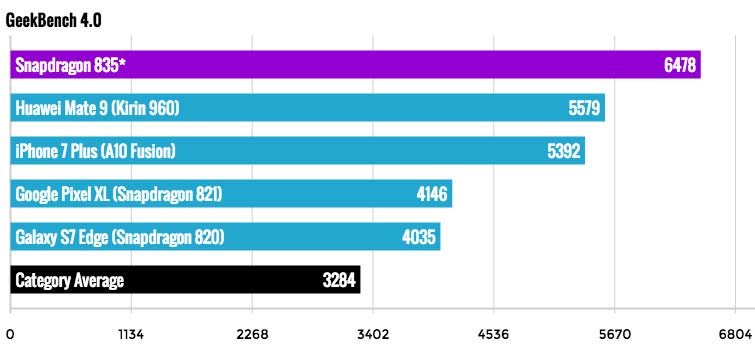
The Galaxy S8 and S8+ both have 4GB of RAM and 64GB of onboard storage. That's double what the base model iPhone 7 offers both in terms of memory and capacity, and it's ahead of the 3GB of RAM the iPhone 7 Plus reportedly features as well. (Apple doesn't officially disclose how much RAM comes with its phones, so that number is based on what's been uncovered by teardowns of the iPhone.)
The iPhone 7 and 7 Plus topped the Galaxy S7 and S7 Edge, respectively, in our battery life testing when Apple introduced those new phones. We're interested to see whether the S8 and S8+ can push Samsung back ahead, particularly since the S8+'s 3500 mAh battery is actually smaller than what the S7 Edge had to offer. Then again, another benefit of the Snapdragon 835 is more efficient power management, so we could see a big jump in battery life once we get a chance to test these new phones.
Advantage: Too Early to Call
Digital Assistants
Siri's no longer the only game in town. Samsung has built a digital assistant of its own called Bixby into the Galaxy S8, even adding a physical button on the side of the phone to summon it.
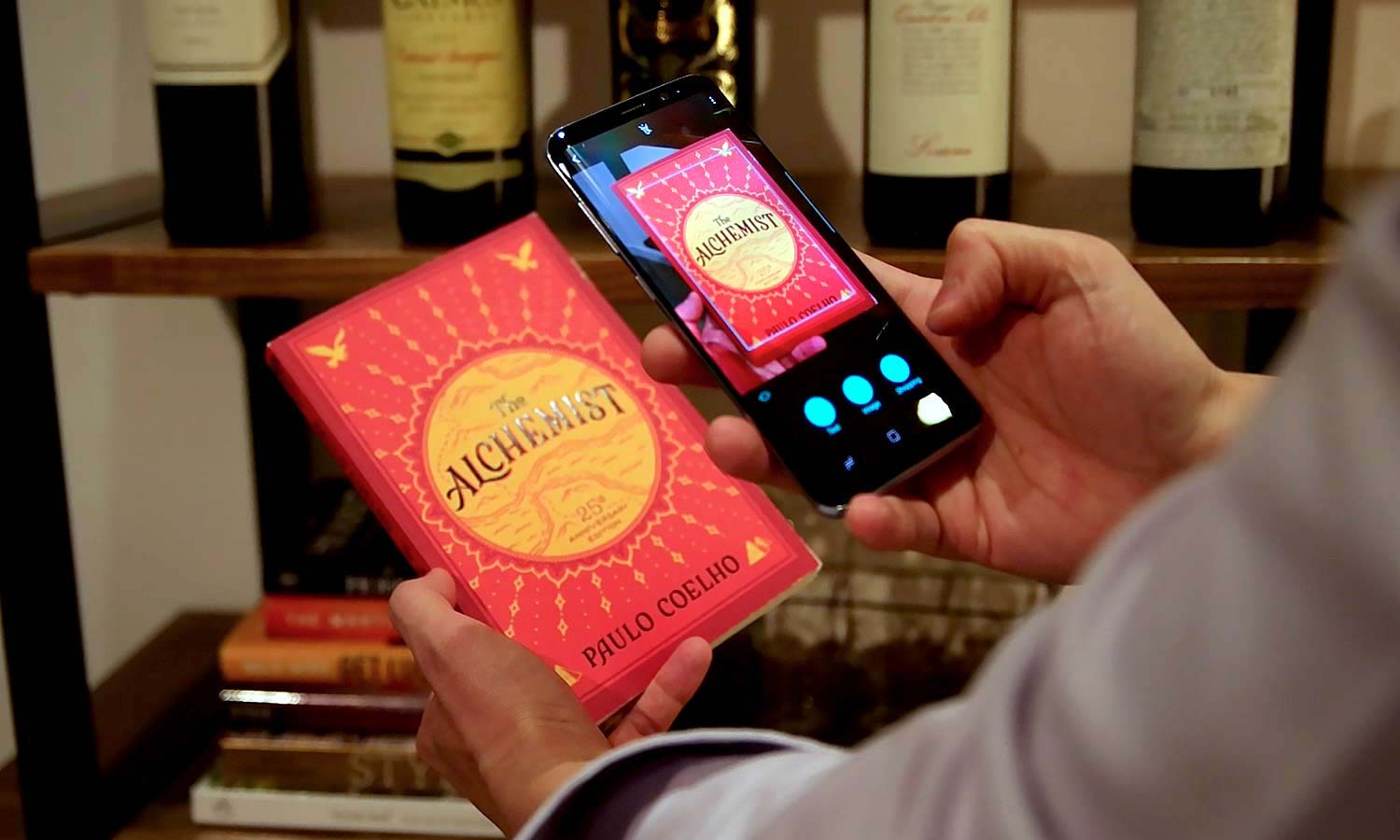
Bixby isn't just a me-too assistant, either. The way Samsung describes it, Bixby is really designed to take on tasks where it makes more sense to speak than type or tap — changing the brightness of your phone's display, for example. The assistant will be able to handle 15,000 tasks at launch, and the Bixby Vision feature, which provides contextual information when you point your S8 camera at an object, sounds more sophisticated than anything Siri can do — at least until the iPhone 8 shows up.
That said, Apple has a bit of a head start with its digital assistant, and Siri picked up some smarts with the iOS 10 update last fall. We're looking forward to pitting Siri and Bixby against one another to see who really does make our mobile lives easier.
Advantage: Bixby, For Now.
Other Special Features
Samsung seems to have taken another page out of Apple's book with its Samsung Connect App, which comes built into the Galaxy S8. The app lets you control smart home devices from your phone, much in the same way that iOS 10's Home app turns your iPhone into a smart home control center.
Samsung does have a trick up its sleeve that Apple has yet to match — an optional DeX dock accessory for the S8 that lets you use the phone as a portable PC. Plug the S8 into the DeX's Type-C connector, and you'll be able to access a desktop-style interface on a connected monitor. You'll even be able to access third-party apps optimized for the DeX dock, such as Microsoft Office and Adobe Lightroom. That's potentially more powerful than the continuity features that let you handoff tasks between your iPhone and Mac.
Advantage: Galaxy S8
Price
The Galaxy S8 and S8+ will cost you a pretty penny — more than what the Galaxy S7 cost when it launched a year ago and more than what Apple's charging for its iPhones today. It's understandable why the Galaxy S8 might command a higher price tag: Samsung added a lot of features to this phone. Still, even the base model of the phone will be one of the most expensive smartphones on the market.
The Galaxy S8 starts at $720 if you get the phone via Verizon. (You'll pay $750 at AT&T, Sprint and T-Mobile.) That's a $70 increase over the iPhone 7, though you are getting more on-board storage with the S8. The S8+ is even costlier — $840 to $850 depending on the carrier. That's $70 to $80 more than what a base model iPhone 7 Plus will set you back.
Advantage: iPhone
Outlook
Despite all the differences in specs and features, your choice between the Galaxy S8 and iPhone 7 (or the S8+ and the 7 Plus for that matter) will likely come down to how you feel about the merits of the phones' different operating systems. If you're a fan of Android, a dual camera on the back of the iPhone 7 Plus is unlikely to convince you to buy an iOS device, just as Bixby is unlikely to persuade an iOS partisan to ditch the iPhone for the Galaxy S8.
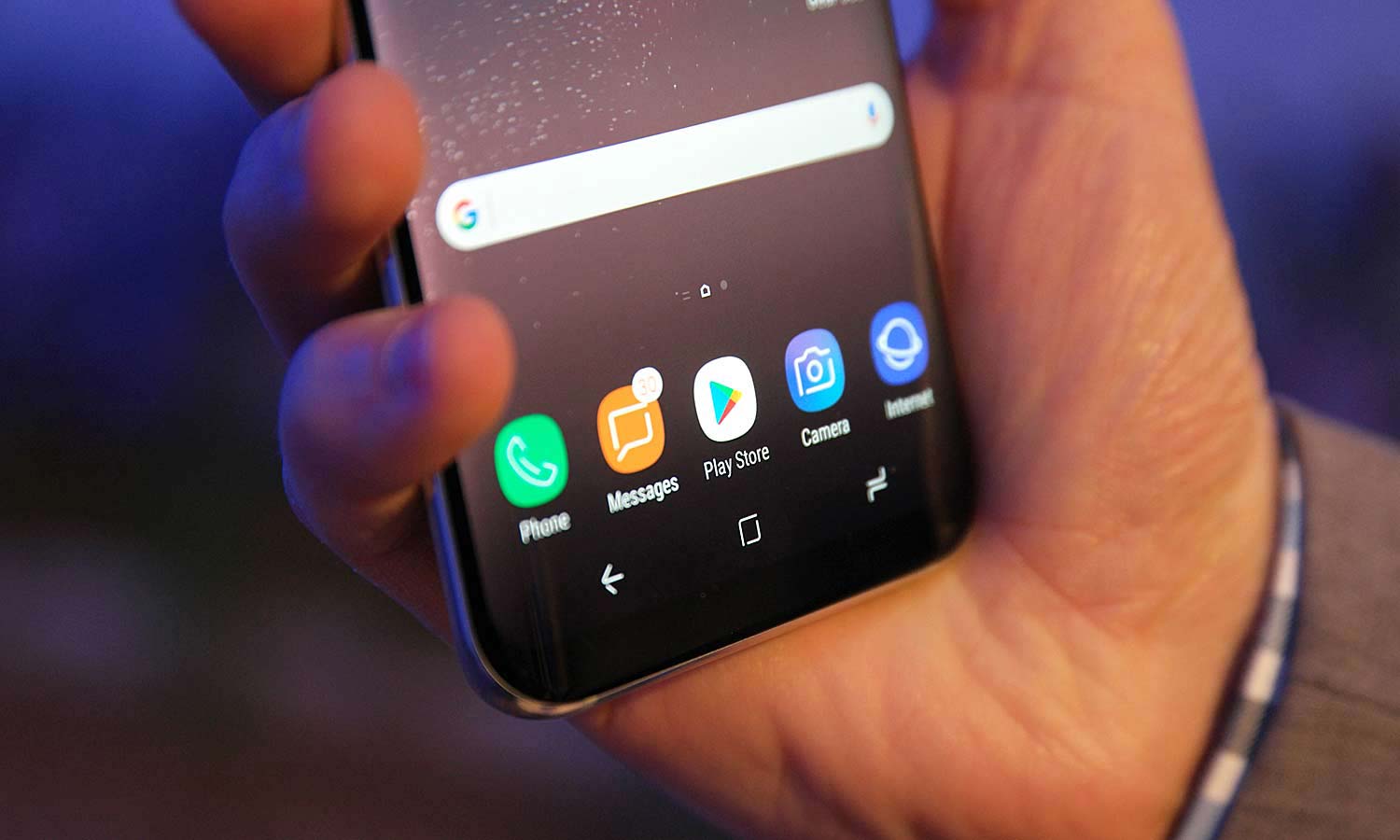
But bragging rights are an entirely different manner. From the gorgeous designs and improved displays to the new assistant, Samsung has packed plenty of impressive changes into its latest phones, setting the tone for the smartphone market for the next six months at least. Apple's now on notice that the iPhone 8 had better provide an equally emphatic response.
Galaxy S8 photos by Sam Rutherford; iPhone 7 photos by Jeremy Lips
Sign up to get the BEST of Tom's Guide direct to your inbox.
Get instant access to breaking news, the hottest reviews, great deals and helpful tips.
Philip Michaels is a Managing Editor at Tom's Guide. He's been covering personal technology since 1999 and was in the building when Steve Jobs showed off the iPhone for the first time. He's been evaluating smartphones since that first iPhone debuted in 2007, and he's been following phone carriers and smartphone plans since 2015. He has strong opinions about Apple, the Oakland Athletics, old movies and proper butchery techniques. Follow him at @PhilipMichaels.

